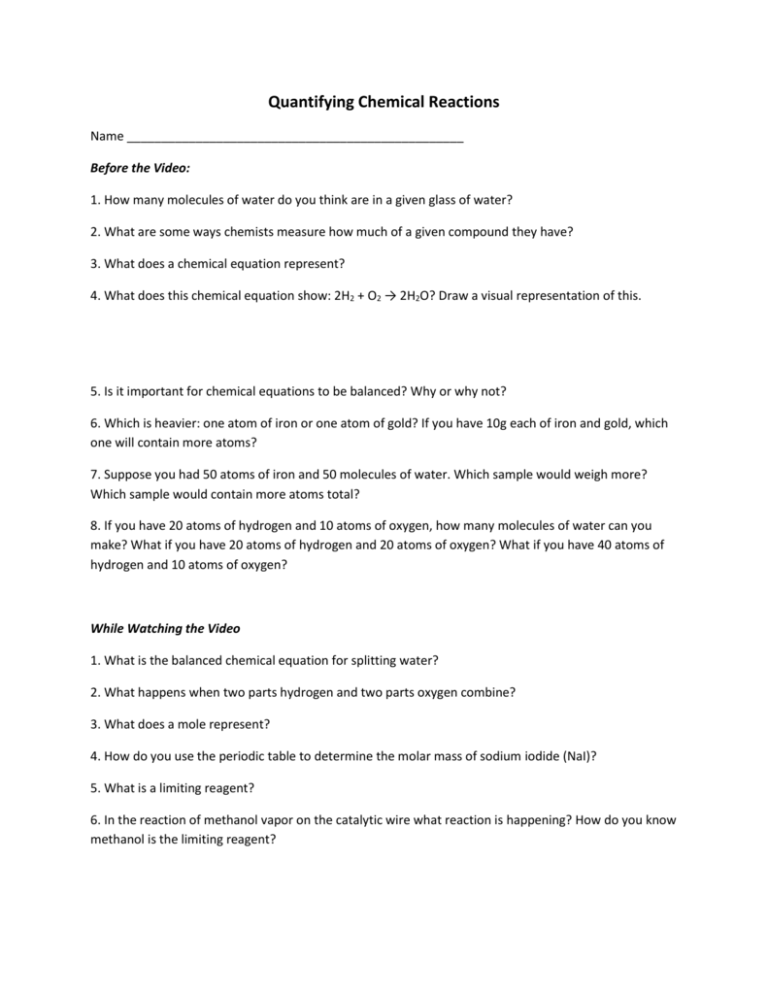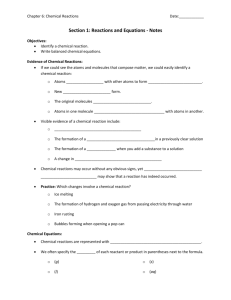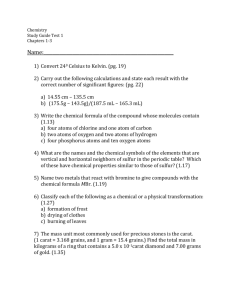Quantifying Chemical Reactions Worksheet
advertisement

Quantifying Chemical Reactions Name _________________________________________________ Before the Video: 1. How many molecules of water do you think are in a given glass of water? 2. What are some ways chemists measure how much of a given compound they have? 3. What does a chemical equation represent? 4. What does this chemical equation show: 2H2 + O2 → 2H2O? Draw a visual representation of this. 5. Is it important for chemical equations to be balanced? Why or why not? 6. Which is heavier: one atom of iron or one atom of gold? If you have 10g each of iron and gold, which one will contain more atoms? 7. Suppose you had 50 atoms of iron and 50 molecules of water. Which sample would weigh more? Which sample would contain more atoms total? 8. If you have 20 atoms of hydrogen and 10 atoms of oxygen, how many molecules of water can you make? What if you have 20 atoms of hydrogen and 20 atoms of oxygen? What if you have 40 atoms of hydrogen and 10 atoms of oxygen? While Watching the Video 1. What is the balanced chemical equation for splitting water? 2. What happens when two parts hydrogen and two parts oxygen combine? 3. What does a mole represent? 4. How do you use the periodic table to determine the molar mass of sodium iodide (NaI)? 5. What is a limiting reagent? 6. In the reaction of methanol vapor on the catalytic wire what reaction is happening? How do you know methanol is the limiting reagent? After Watching the Video 1. Why is having a balanced reaction important in chemical calculations? 2. What is the ideal way to minimize waste when performing chemical reactions? If it is not possible to eliminate waste entirely, what factors might influence the strategy to minimize it? 3. Are masses like grams and kilograms always the easiest way to measure chemical quantities? How else might you need to measure amounts of reactants and products in order to perform chemical calculations?











